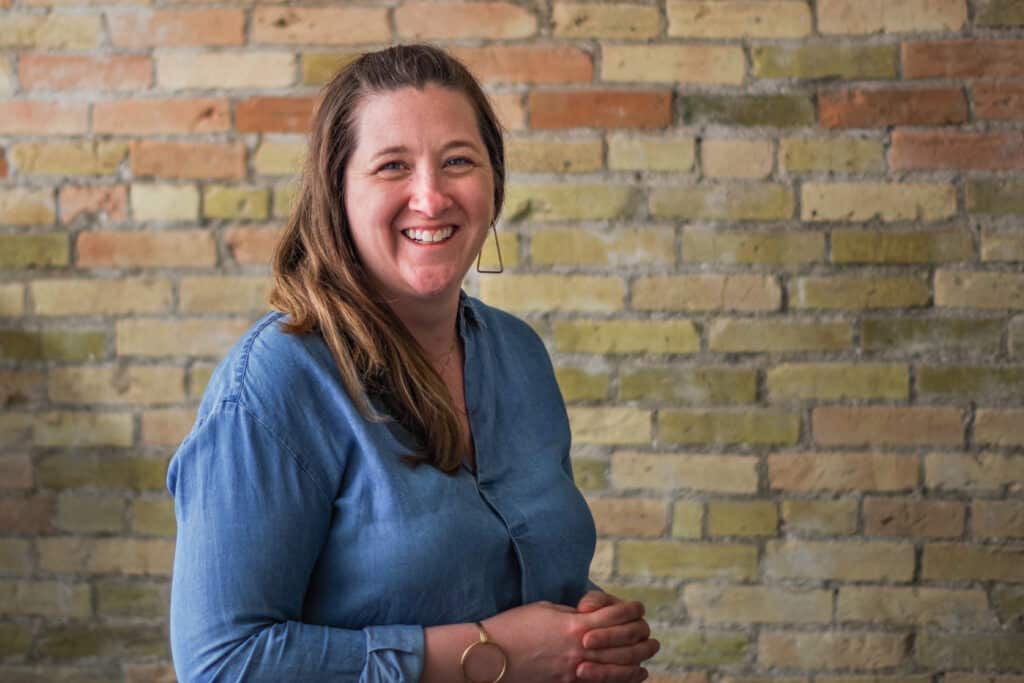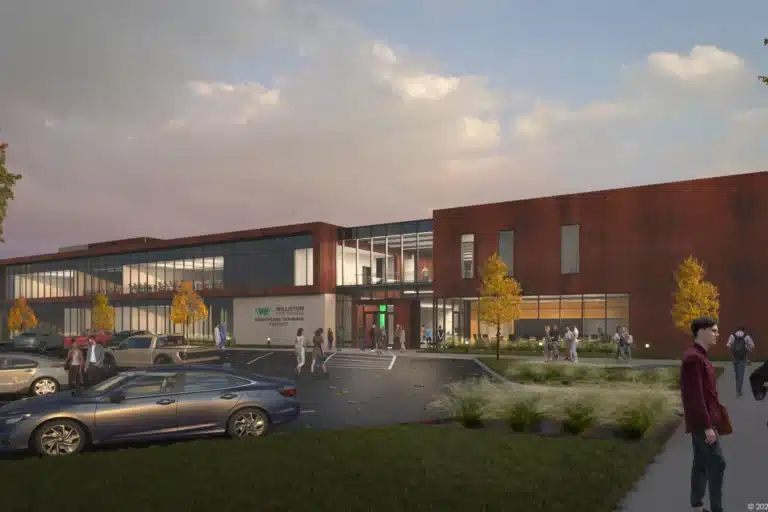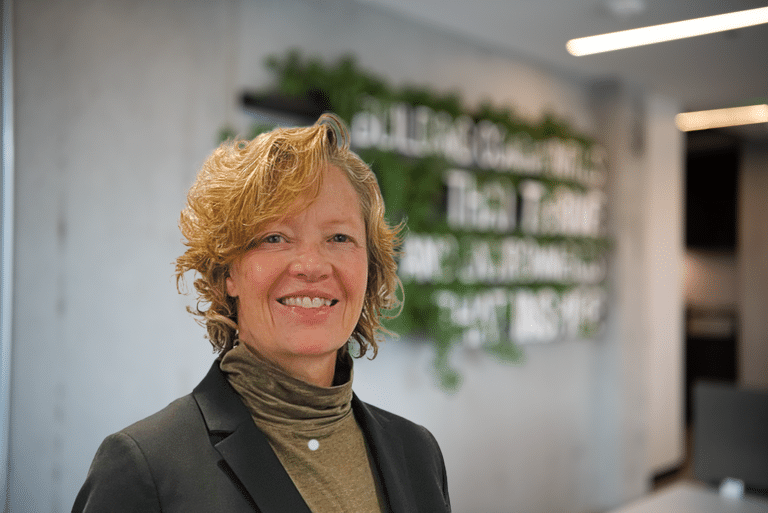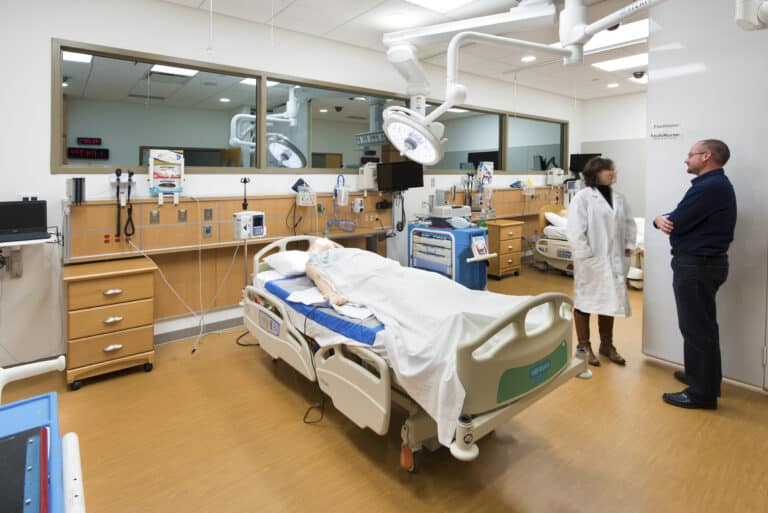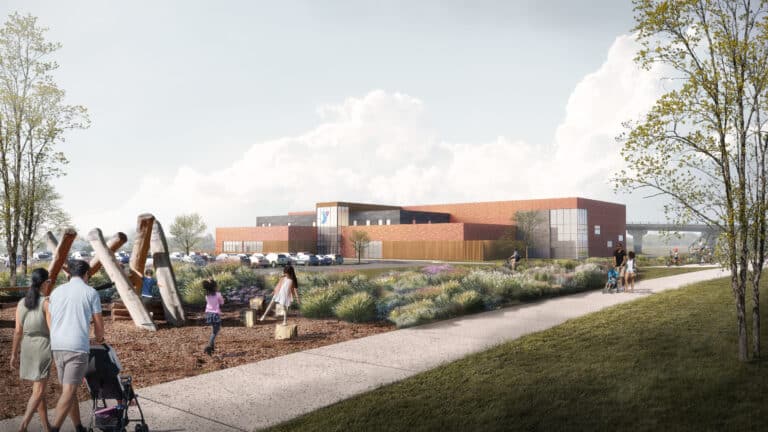Recently completing the Crime Prevention Through Environmental Design (CPTED) professional certification, JLG’s Whitney Lougheed, AIA, LEED AP, adds a third esteemed acronym to her title, CPD. The term CPTED originated in 1971 with criminologist C. Ray Jeffrey, who hypothesized that the way to prevent crime is to focus on the total environment. His theory went mainstream in 1991 with Timothy D. Crowe’s book, “Crime Prevention Through Environmental Design.” Since then, the strategies have remained applicable, not only to cities and neighborhoods but also to campuses and interior-built environments, such as schools.
What is CPTED?
CPTED, pronounced in the field as “sep-ted,” seeks to improve quality of life through the reduction of fear and incidences of wrongdoing, reinforced by the proper design and effective use of the built environment. In this case, the phrase “proper design” refers to the physical environment of a school, its social management, and its directives.
Social management refers to internal, external, and shared programming; community engagement and partnerships; and environmental culture desired by the school and community. This information is typically provided by the district and administrators, included as part of the design conversations to ensure all needs are effectively supported within the school’s design.
Directives within schools include policies and rules—explicit or implied—that impact the day-to-day operation of the building. These may or may not have a direct correlation on the surface to school safety and security. Like social management, directives are important to understand during the design conversations, ensuring the school supports and does not work against the intended outcomes of these directives.
The 3 Ds of CPTED
The dominant focus of CPTED is the built environment of your school, where the design team comes into play. Through the three D’s—Designation, Definition, and Design—schools can incorporate increased safety and security through everyday design principles hidden in plain sight. Below is a breakdown of the three Ds, including questions that help design teams define customized solutions:
Designated Purpose
· What is the space intended to be used for? Why are people gathering here?
· Will that intended use remain the same now and in the future?
· How is the purpose defined by different users?
Defined Behaviors
· What are the desired/acceptable behaviors and outcomes of people using the space?
o Student to Student
o Individual Student
o Student to Staff
o Staff to Student
o Individual Staff
o Community Culture
· Is the space defined physically? Does it need to be?
· What should the name of the space be?
o Priya Parker shares the concept of “naming as priming” in her book “The Art of Gathering.” Her book delves into the term “Lab,” short for laboratory, signifying experimentation and possibility, which she states is crucial to the process. “Simply because of the name, I’ve noticed that people seem to show up differently. They’re more open…”
Design
· Natural Surveillance
o Increase perception that people can be seen, thus increasing the perception of being caught.
· Natural Access Control
o Control access and guide people through spaces with strategic design that encourages movement to specific spaces and pathways while avoiding others.
· Territorial Reinforcement
o Create and develop a strong sense of ownership using physical attributes like flooring changes, signage, exterior fences, and landscaping.
· Maintenance
o Ensure space is well-maintained to achieve its intended purpose, decreasing opportunities for the introduction of negative behaviors.
o Extension of ownership in care and maintenance; if people feel they belong in a space, they will inherently want to keep it in good condition.
Why Should My School Care About CPTED?
Discussions around school safety and security often focus on reacting to negative behaviors, more specifically to negative violent actions. While most administrators look to direct or immediate solutions, school designers look to environmental solutions based on the principles of CPTED, instead setting the stage to empower positive behaviors.
“During early design discussions, school administrators and staff commonly ask questions like, ‘How do we target harden so that we can protect ourselves in place?’ and ‘How do I stop an intruder?’. While these questions should be asked and addressed in the design process, the reduction in wrongdoing is much more about understanding the desired culture and quality of life in the school, including a building design that supports those outcomes,” explained Lougheed. “The goal should be more focused on preventing the wrongdoings versus stopping the wrongdoings.”
One of JLG’s recent successful implementations of the CPTED principles focused on an increased quality of life through converting a 1960s era high school—picture long and twisted corridors and no visibility into classrooms—into a ‘main street’ design approach. Here, active and engaged learning is on display and staff can passively see all areas of student interaction – supporting positive behaviors. The messaging through design from students and staff alike was a desire to feel safer walking the halls and having daily one-on-one interactions. From the administration side, it was an opportunity to encourage and increase positive student interaction to help reduce negative behaviors that can lead to larger issues.
Reimagining School Safety
A true summarization of the concept and our own philosophy on incorporating CPTED methods comes from Reimagining School Safety: A Guide for Schools and Communities. Shifting safety, as noted by the guide’s authors, Lauren Trout, Christina Pate, Krystal Wu, and Joe McKenna, “is defined so that it is not the absence of violence but the existence of systems and structures that support mutual care, belonging, and interconnection, schools’ policies, practices, and values shift toward creating strong communities and places of collaborative learning.”
The authors also refer to a “renewed focus on prevention that is rooted in supporting all students’ psychological safety, mental health, and identities. Finally, the movement toward a more comprehensive approach [to school safety] provides an opportunity to break out of silos and work across disciplines…”
“A lot of people believe CPTED is about physically stopping someone from doing something rather than focusing on creating an environment where even if they could do something mischievous, they don’t want to – because of their ownership, their ability to be seen, and just an increased quality of life,” said Lougheed. “We worked with a principal who said his goal was to stop any large-scale active threat situation before it starts. He is doing just that by creating a welcoming and engaging environment for the students, so they aren’t going down paths of negative behavior that builds and leads up to large-scale incidents.”
“As a CPD, I look at the CPTED model as circular,” said Lougheed. “It all starts with understanding how your school seeks to improve the quality of life for students and staff. If we follow CPTED’s three Ds, beginning with social management and directives, we can increase positive behaviors – a critical first step towards designing a better built environment. It’s about collaboratively designing a positive K12 learning environment that outweighs negative behaviors; students not only know they can’t, but also no longer want to. This shift in environment and ultimately, mindset changes everything.”
Sources:
Trout, L., Pate, C., Wu, K., & McKenna, J. (2022). Reimagining School Safety: A Guide for Schools and Communities [Center to Improve Social and Emotional Learning and School Safety at WestEd]. WestEd Reimagining School Safety: A Guide for Schools and Communities (wested.org)
Maté, Dr. Gabor, interviewed by Stephen Porges (2021) referencing ‘The Wisdom of Trauma’ film
